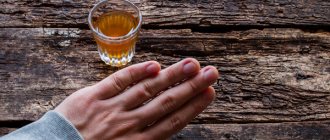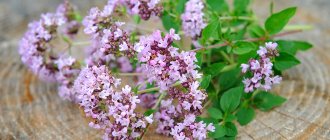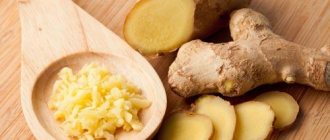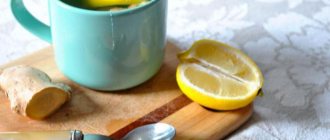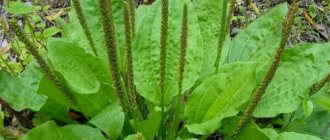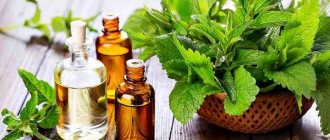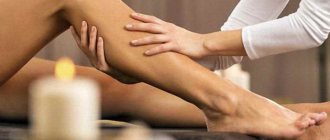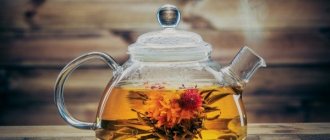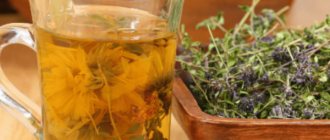Doctors call a heel spur a specific bone growth that causes inflammation of soft tissues, which causes physical discomfort to a person.
This problem can be combated with the help of antibiotics, anti-inflammatory drugs, wave therapy, and in especially severe cases, through surgery. However, along with traditional methods of treatment, non-traditional methods of treatment can also be considered, which include treatment of spurs with propolis. The method has been practiced for decades and is deservedly popular, as evidenced by a lot of positive reviews, which means it is worth considering in particular detail.
Features of treatment with bee products
Beekeeping products have an incredibly wide range of applications, because with their help you can cure a range of almost all diseases known to mankind, ranging from mild colds to severe diseases of the heart, blood vessels and even joints.
Even in ancient times, it became known that with the help of certain beekeeping products it is possible (with the right approach to therapy) to normalize vision problems, cure disorders in the gallbladder, stop signs of atherosclerosis, activate the healing process of the skin or mucous membrane (both externally and and from inside the body), as well as much more. Accordingly, it is simply unacceptable to ignore information about how spurs are treated with propolis.
Important!
Beekeeping products are allergenic, so before starting treatment it is necessary to conduct an allergy test to determine the sensitivity of the body, and you can also consult a doctor about this.
The composition of the products obtained by bees is truly unique, as are their properties, but we can say for sure that they have an extremely positive effect on the human body as a whole and on its individual systems.
Propolis, like other bee products, contains enzymes, acids, vitamins and even natural antibiotics, which are exclusively natural in nature, so there is no need to worry about any side effects in its use. In general, traditional medicine with the help of beekeeping products has long taken its place “under the sun”, so you definitely shouldn’t ignore propolis when looking for ways to treat heel spurs.
Causes and symptoms of spurs
A heel spur is usually called a chronic microtrauma that occurs on the ligament of the sole of the foot. It has the appearance of a pointed growth, which consists of bone tissue and in appearance resembles a spike that is pressed into the foot when loaded. The most characteristic symptom of this condition is pain, and patients complain of a “nail in the heel” sensation, that is, the presence of an acute pain syndrome that intensifies when a person places emphasis on the heel. The lack of adequate therapy leads to pain persisting in the future even without load.
Special attention should be paid to such a symptom as “starting pain”, which occurs when getting out of bed after a long break or rest, as well as changes in gait, which occurs involuntarily, because a person instinctively tries to relieve the load on the area where the pain develops. It is also worth saying here that this subsequently leads to quite serious health problems.
The main reasons for the development of the disease include:
- flat feet – the lack of therapeutic measures in treatment leads to a change in gait and increasing load on the heel area; too hard physical training;
- some injuries;
- excess weight (due to too much stress on the legs);
- rheumatism, gout, and some vascular disorders.
However, age is considered the main cause of this problem, because according to statistics, it is the elderly who suffer from this disease.
Treatment of heel spurs with propolis and podmor: is it effective, features
Treatment at home shows positive dynamics and really not only dulls pain, but also helps to get rid of the disease completely. As practice shows, treatment with propolis and podmor takes time, do not rush to get results after the first procedure. It all depends on the degree of neglect and development of the disease, anatomical features, type of activity, load on the body at the time of treatment. The pathology of heel spurs can be eliminated without surgery; the main thing in treatment is to observe periodicity and regularly take care of your health. Everyone sets the course of therapy for themselves depending on their state of health.
What are the dangers of lack of treatment?
It is worth understanding that the bone spur itself cannot cause pain, because it occurs in response to swelling of the connective tissue that forms around the heel spur, and it is this fact that makes gait unbearable. Separately, it must be said that although most people believe that a bone spur can only form on the heel, this is not always the case, because sometimes it also appears on the edge or in the center of the foot. The difficulty in this matter is that growths can be detected only in 30% of cases; in other situations, the disease occurs hidden.
In addition to severe pain, this disease is dangerous for the development of varicose veins, as well as restless legs syndrome, which can practically deprive a person of sleep, because constant muscle twitching and cramps do not contribute to this.
Lack of sleep, in turn, leads to serious mental disorders. Without treatment, a woman may develop problems with the diaphragm of the pelvic organs, which increases the load, which can subsequently cause infertility, so you should not ignore the available methods of therapy.
Treatment of heel spurs with traditional medicine using herbs
When considering folk methods of getting rid of spurs on the heels, one cannot fail to mention herbal treatment. To eliminate growths and relieve pain, fresh and dry herbs are used, from which tinctures are prepared.
The recipe for making the tincture is very simple: take the herb and pour boiling water from the kettle. Leave for 30-60 minutes, then dilute with water to the required amount and take a foot bath. You can also make a medicinal lotion from herbs.
What herbs help remove spurs on the feet? To prepare tinctures or lotions you can use:
- Chernobyl;
- cocklebur;
- nettle;
- lilac flowers;
- chamomile, etc.
It is important that the herbs have an aseptic and anti-inflammatory effect.
You can also use homemade aloe: cut the leaf lengthwise and apply fresh sections to the heel fascia for a couple of hours.
Recipes for treating spurs at home with propolis
There are quite a few ways to treat this disease, ranging from ointments and oral tablets, which affect calcium and, accordingly, bones, to surgery. However, there are also a lot of folk remedies, so treating heel spurs with propolis is a completely different method.
API therapy (as the method of treating diseases with the help of beekeeping products is called) has long proven its effectiveness in practice, and if we talk specifically about propolis, then we should immediately pay attention to the fact that this is a universal product that is suitable for both internal and external use. external use.
Propolis tincture is taken internally, among the properties of which its ability to have a positive effect on the absorption of calcium, which makes up bone tissue, is particularly notable. In addition, it activates the process of removing salts from the body, which serves as an excellent prevention of the development of gout, activates the healing process of minor injuries, improves the structure of joint tissue, normalizes metabolic processes in the body, and also improves the functioning of the immune system, has a positive effect on the functioning of the heart and blood vessels and even restores the elasticity of the skin.
Speaking directly about the treatment of heel spurs, it is worth saying that propolis allows you to cope with this disease due to the fact that it is capable of:
- reduce the inflammatory process in soft tissues that arise under the influence of bone tissue proliferation;
- improve tissue trophism and thereby stimulate their regeneration;
- quickly and effectively relieve pain;
- relieve swelling and, most importantly, stop the growth of the bone spine, as a result of which the patient feels relief almost immediately after the start of therapy.
How to treat a heel spur
Inflammation of the plantar fascia (plantar fasciitis) and the deposition of calcium salts in the tubercle of the heel bone with the formation of a marginal osteophyte is called a heel spur. The appearance of the disease is facilitated by such unfavorable factors as excess body weight, foot injury, pathology of the musculoskeletal system, flat feet, and old age.
As a result of the proliferation of bone tissue of the heel bone, disruption of the integrity of soft tissues and the inflammatory process, intense pain occurs in the plantar part of the foot when resting on the heel.
This leads to a deterioration in full motor activity, loss of ability to work, and a decrease in quality of life. Early diagnosis and treatment of the pathological process improves the prognosis of the disease and prevents its progression. To get rid of the disease, conservative, surgical and traditional methods are used. How to cure heel spurs will be covered in this article.
Conservative methods of therapy
At the first signs of the disease, you should consult a doctor for a comprehensive examination. The specialist will examine the diseased limb and prescribe additional diagnostic methods - a clinical blood test, radiography and ultrasound examination of the foot.
During the inflammatory process, leukocytosis is detected in the peripheral blood, a shift in the leukocyte formula to the left, an increase in ESR, especially due to the addition of a secondary infection and the appearance of a purulent focus. An x-ray reveals a marginal osteophyte in the form of a spike in the area of the tubercle of the calcaneus; ultrasound allows one to determine the condition of the soft tissues in the area of pathology. After diagnosis, complex conservative therapy is prescribed.
Orthopedic devices
To reduce the intensity of the inflammatory process, reduce pain and heal tissue as soon as possible, the use of orthopedic devices is prescribed.
At night, it is recommended to wear orthoses that ensure the position of the foot at a right angle to the bones of the lower leg. Immobilization of the limb helps to regenerate (heal) the plantar aponeurosis without shortening its length and microtrauma.
During the daytime, the sore lower limb is unloaded by limiting physical activity. When walking, it is recommended to use a cane, crutches (for bilateral lesions), orthopedic insoles and heel pads, which reduce the pressure of the heel bone on the soft tissues. This approach helps to quickly cure heel spurs with the help of medications.
In some cases, taping is used - fixation of the anatomical structures of the musculoskeletal system by applying adhesive tape or adhesive plaster. Taping for heel spurs is prescribed to maintain the longitudinal arch of the foot and reduce the damaging effect of the osteophyte on surrounding tissues. A doctor or nursing staff can teach you how to immobilize a limb.
Medications
Drug therapy for the disease is aimed at eliminating inflammation in the plantar part of the foot, reducing pain, improving local blood circulation and normalizing metabolic processes. Medicines have a warming, decongestant, local irritant effect and help restore movement in the foot.
Nonsteroidal anti-inflammatory drugs (NSAIDs)
Prescribed for local use in the form of ointments, creams, gels: butadione, ketorol, piroxicam. Medicines have a pronounced analgesic and anti-inflammatory effect when administered enterally (tablets, capsules) and parenterally (solutions for injections). Both non-selective drugs (diclofenac, ibuprofen) and selective drugs (nimesulide, movalis) are used.
Local irritants with anti-inflammatory effects
Prescribed for pain relief, normalization of metabolism, prevention of infection, and reduction of the inflammatory response. Dimexide gel and medical bile are used as a compress on the heel for 12-24 hours.
Dietary supplements (BAA)
Ointments for local therapy are made from natural ingredients and have anti-inflammatory, analgesic effects, and improve microcirculation. The most popular are Pyatkospor gel, Tiger Eye cream, Shark oil cream, and plant-based patch (Bone Spur Plaster).
Injection therapy
It is used for intense pain and inflammation that cannot be treated with other medications. Includes novocaine blockade of the heel spur several times a day during the acute period. To resolve calcifications and eliminate pain, injections of glucocorticoids (Kenalog, Diprospan) are prescribed into the area of the osteophyte.
Medicines can be administered through physiotherapy: electrophoresis with novocaine, phonophoresis with hydrocartisone. Magnetic therapy, ultrasound, paraffin, radon baths, and massage are also prescribed. During the period of subsidence of the acute process, a course of therapeutic exercises is carried out.
Traditional methods of therapy
Unofficial medicine recipes are based on organic ingredients that have no absolute contraindications and do not cause side effects. Traditional treatment of heel spurs must be agreed with a doctor, does not exclude the use of conservative methods, and is most effective as part of complex therapy in the initial stages of the disease and for the prevention of the pathological process.
Radish
Compresses are made on the affected foot using black radish. To do this, the root vegetable is washed well under running water and chopped on a fine grater along with the peel. The resulting slurry is squeezed out of excess liquid and applied to the heel, secured on top with a plastic bag and a cotton sock. In the morning, the compress is removed, the foot is washed with warm soapy water, and the heel is lubricated with a nourishing cream. The course of treatment is 7-10 procedures, the therapy is repeated if necessary.
Iris
Orris root in an amount of 250 grams is washed under running water and ground in a meat grinder. The resulting raw material is poured with 300 ml of alcohol, hermetically sealed and infused in a cool, dark place for 15 days. Moisten gauze folded in several layers with the tincture, apply it to the heel, and secure it to the foot with a bandage. The bandage is left overnight, in the morning the leg is washed with warm water and lubricated with baby cream. Compresses with iris are alternated with Vaseline dressings, the course of therapy is 20 days, 10 dressings with each ingredient.
Iodine
Treatment of heel spurs with iodine is the most popular method of treating the disease with folk remedies. To do this, pour 3 liters of hot water into a basin, add 2 tablespoons of alcohol tincture of iodine and mix. The sore foot is soaked in the resulting solution for a quarter of an hour, then the foot is dried, an iodine mesh is applied to the heel, and a warm sock is put on. It is better to perform the procedure at night to provide rest to the sore leg. The method is not suitable for patients with sensitive skin, varicose veins, or individual hypersensitivity to iodine.
Surgical and wave therapy methods
If conservative methods are ineffective, treatment with X-rays and shock wave therapy (SWT) is prescribed. Surgical intervention is used in advanced cases of the disease, when other methods were useless and did not stop the progression of the pathological process.
X-ray exposure
Local irradiation with X-rays relieves the inflammatory process, promotes the healing of damaged tissue, and has an analgesic effect from the first day of treatment. The course of therapy is usually 6-10 procedures, the duration of each session does not exceed 10 minutes. Irradiation is carried out in a special room in a clinic or medical center; treatment does not require hospitalization. During the period of manipulation, it is recommended to wear orthopedic insoles to unload the foot and limit physical activity.
UVT
Shock wave therapy is a radical method of treating heel spurs without surgery. This is an innovative method of removing osteophyte by exposure to ultrasound radiation of a certain wavelength. In addition, the procedure has a pronounced anti-inflammatory and analgesic effect. Treatment is prescribed on an outpatient basis with a course of up to 8 procedures lasting 10-30 minutes.
Propolis in its pure form
The simplest, most common and effective way to treat heel spurs with propolis is to use it in its pure form.
To do this, you need to purchase propolis mass in its pure form, then separate about 5-10 grams from it and place this amount of product in a water bath to soften (the process usually does not take much time, since the mass just needs to become plastic). After this, it is necessary to make a small layer from the resulting product, which is applied to the heel (applied to the place of growth) and fixed on it by using an elastic bandage. You can additionally wrap your foot in a woolen scarf, because there is an opinion that increased temperature promotes a more active penetration of substances from propolis into the blood, but this method is not suitable for everyone, because the compress must be left overnight, and it is quite difficult to sleep comfortably in such conditions.
The procedure must be repeated daily until complete recovery. Treatment can be long-term – up to one month.
Propolis-based ointment
An equally noticeable effect is provided by propolis-based ointment, which is prepared from propolis mass and petroleum jelly. It is necessary to mix the above ingredients in a ratio of 3:6, melt in a water bath, and then add four tablespoons of butter to them (you need to choose the highest quality, because the effectiveness of the finished medicine depends on it).
The ointment is thoroughly mixed, after which it must be cooled and stored in the refrigerator, warming up a little before each use. The medicine is applied to the skin daily, after which a woolen sock is put on the foot and treatment continues for one month.
Important!
If relief does not occur during therapy, you should consult a doctor.
Tincture with propolis and aqueous solution
As mentioned above, propolis for heel spurs can also be used internally in the form of a tincture or aqueous solution. The effectiveness of these medicines is the same, it’s just that there are people who cannot afford to take medicines prepared on the basis of alcohol, and it is they who are recommended to pay attention to an aqueous solution of this product.
The difference in this case is that the tincture is stored for quite a long time and you can buy it (and it is recommended!) in finished form from manufacturers who pay special attention to compliance with the rules of the technological process of preparing the medicine, but you will have to prepare the infusion with water yourself, and the shelf life he has a short one - seven days.
Dosage - it is recommended to take tincture or infusion twice a day, 20 drops, 20 minutes before or after meals. It is best to treat heel spurs with the combined use of propolis medications - that is, take products prepared on its basis internally, and do external procedures.
Ready-made propolis tincture 20% can be ordered by phone:
+380984298830 +380955638797
Instructions for use
When treating heel spurs, Dimexide is used exclusively externally, in the form of compresses, lotions, rinses and applications. Before use, it is diluted with distilled or boiled water in a 1:1 ratio. Such a solution will have a concentration of 50%.
If the product is intended for teenagers and people with sensitive skin, it is better to dilute Dimexide with water in a ratio of 1:3, 1:4 or 1:5. It is strictly not recommended to make compresses with this drug for children under 12 years of age, pregnant women and nursing mothers!
Pharmacies sell not only concentrated Dimexide, but also ready-made products for external use: 30 and 70% ointment, as well as 25 and 50% gel. These drugs are not intended to be rubbed into the skin: they are applied to a napkin and applied to the sore spot.
Sometimes doctors prescribe Dimexide in a different concentration, from 10 to 90%. When preparing such solutions, it is necessary to maintain the correct proportions.
Preparation of a solution of a given concentration - table
| Solution, % | Dimexide, parts | Water, parts |
| 10 | 1 | 9 |
| 20 | 1 | 4 |
| 25 | 1 | 3 |
| 30 | 3 | 7 |
| 40 | 2 | 3 |
| 50 | 1 | 1 |
| 90 | 9 | 1 |
Attention! Dimexide is a toxic drug: it cannot be taken orally, and external use in its pure form leads to serious burns. However, when applied topically in acceptable concentrations, it is safe.
A compress with Dimexide is prepared as follows:
- A bandage rolled up in 7–10 layers is soaked in a 50% solution of the drug and applied to the heel so that its edges extend beyond the affected area.
- A layer of waterproof material (for example, a plastic bag or wax paper) is placed on top of the bandage.
- After which the foot is wrapped in a warm scarf or a woolen sock is put on it.
This compress should be done 1 to 3 times a day for 10–14 days.
When making a compress, you must use only natural, undyed bandages and plasters.
When treating with Dimexide, several rules must be followed:
- It is better to dilute the product with water while wearing rubber gloves, since the concentrated solution causes burns if it comes into contact with the skin.
- Contact with water gives rise to a violent chemical reaction with the release of heat. The drug becomes hot, so you need to let it cool before using.
- The diluted solution should not be rubbed into the skin.
- The duration of the procedure should not exceed 30 minutes.
- You should not use colored fabrics for compresses: Dimexide is capable of carrying not only medicinal substances through the skin, but also dyes, which are often unsafe for health.
Before starting treatment with Dimexide, you need to conduct a sensitivity test. Using a swab, apply a 30% solution to the inner surface of the forearm and wait 15 minutes. If during this time redness, rash and irritation do not appear on the skin, then you can safely prepare and apply a compress with Dimexide.
As a rule, during the first procedures a slight burning or tingling sensation may be felt, which usually goes away by the middle of the treatment course.
Propolis oil
A good effect is achieved by using propolis oil, which is prepared on the basis of butter (100 grams) and propolis (10 grams). The ingredients must be melted in a water bath, then, with constant stirring, brought to a homogeneous consistency and removed from heat. The finished medicinal product must be cooled and used daily - apply a small amount to the skin of the foot, then wrap it in gauze and put socks on top.
The duration of treatment is one to two months. The oil softens the skin and also saturates it with fatty acids and vitamins.
Uses of honey
You can also treat heel spurs with propolis mixed with honey, which enhances the healing effect of “bee glue.” There is nothing complicated in using this method, because you just need to prepare propolis honey or buy it ready-made (this can be done at the “Vesely Shershchen” apiary), after which the mixture should be applied in a thick layer to the foot, wrapped in a bandage or gauze and left on night.
The duration of the course is a month; it is recommended to supplement the method with the use of propolis tincture orally.
Iodine, salt and propolis
Another method of treating spurs is a compress, which is prepared on the basis of iodine, salt and propolis. There is evidence that it provides immediate relief immediately after the first treatment.
You need to take 20 grams of propolis and grind it, then place it in a steam bath and melt it a little. Then 50 milliliters of iodine and a teaspoon of salt are added to the melted product, after which the mixture is stirred until smooth.
Before applying the compress, it is recommended to steam the foot in hot water, after which cotton wool or a bandage should be moistened in the resulting propolis-iodine mass and applied to the spur. The compress should be left overnight, and it is recommended to repeat the procedure within a week.
Honey and other ingredients
Foods like honey and salt also help treat the spur. The salt is simply heated in the oven to pour into a bowl and heat the spur until the product has cooled. An even simpler method is to use a magnet instead of salt. There is no need to heat it, but the heel must fit in. More understandable methods are discussed below.
Honey, iodine and salt
30-35 grams of honey are heated in a water bath to T = 50° C. Then add a teaspoon of salt. When the honey cools, add 50 ml of iodine - no other products are needed. The mixture is applied to a cotton pad, which is fixed with polyethylene. Wrap the compress on top with a bandage and put on a woolen sock.
The procedure is carried out overnight. In the morning, the compress is removed, and the spur needs to be treated using the indicated method for 5 days.
Treatment of spurs with a compress
There will be some subtleties:
- First, your feet need to be steamed in water (T = 45 – 50° C);
- In the morning, the compress is not removed immediately - the stiff tissues need to be kneaded;
- You can store the mixture in the refrigerator, but then warm it up before using it.
A similar method also helps with bedsores, but it is not salt and iodine that are mixed with honey, but grated potatoes in a 1 to 1 ratio.
The potato compress can be kept for 3-4 hours.
Cabbage leaves
Edible products you can use:
- The cabbage leaf, preferably not the outer one, is greased from the inside with honey;
- The sheet is applied to the heel and secured with a bandage. “Thermal insulation” – a layer of polyethylene – won’t hurt either.
- A wool sock is put on top.
The procedure is carried out in the evening, and the compress is left overnight. And of course, every day you need to take a new sheet. By the way, cabbage without any additions is considered a good remedy for bedsores.
There are several hypotheses about the duration of treatment. And all of them are supported by practice.
| Honey | 2 teaspoons |
| Lemon juice | 2 teaspoons |
| Chicory | 2 tbsp. spoons |
| Boiling water | 500 ml |
For some, three sessions are enough. But in one case the treatment lasted three weeks.
What about propolis?
A spine or spine is a soft tissue compaction that most often appears on the foot. And if a thorn appears on the heel, it can be confused with a spur. And the treatment in the two cases will be different.
Propolis oil
To get rid of thorn, a small area of skin is lubricated with propolis oil. We are talking about an oil extract - the procedure is carried out once a day.
The nodular growth on cartilage tissue is not a spine or spur. It is impossible to get rid of it without surgery.
The advantage is that such defects never appear on the legs. Cartilage tissue is usually affected on the wrists, fingers, etc.
The appearance of a growth with a heel curtain
With wheat
Wheat flour is mixed with honey, for which a water bath with T = 50 C is used. The weight proportion is “1 to 1”. Next, a honey cake is applied to the heel. But first you need to steam your leg in water. The procedure is carried out once a day for one week.
If the diet contains foods that contain puric acid, such a diet promotes the growth of spurs. Meat broths are prohibited, including chicken broth, all legumes, fatty fish soup, as well as mushrooms - champignons, porcini and milk mushrooms.
Therapeutic insoles
In conclusion, it is worth saying that a person who suffers from heel spurs should purchase therapeutic insoles that can reduce the load on the heel, thereby stopping the process of inflammation of the soft tissues and making the patient feel better.
Insoles cannot rid a person of the problem, but they certainly help alleviate his condition and thereby increase the effectiveness of the treatment (because when the load on the foot is reduced, the bone spike will stop growing).
Sincerely, family apiary 'Jolly Hornet'
Why does this disease develop?
Treatment of this pathology includes not only the normalization of calcium balance in bone tissue and the elimination of overgrown pathogenic formations, it also takes into account the reasons due to which the disease began to develop.
The main culprits not for the occurrence, but for the development of heel spurs are:
- flat feet;
- injury to the foot and heel bone, for example, due to frequent jumping;
- improper load on the foot, for example, constantly wearing high-heeled shoes or without them at all;
- “standing” work;
- various age-related changes;
- playing sports such as athletics;
- diseases contributing to pathology.
Diseases in which the risk of developing a spur increases significantly are:
- Arthritis, both rheumatoid type and psoriatic.
- Ankylosing spondylitis.
- Gout.
- Polyarthritis.
- Diabetes mellitus of both types and susceptibility to it.
- Atherosclerotic changes.
- Disturbances in blood microcirculation in the legs.
- Microtears of tendons and ligaments.
- Diseases of the kidneys, liver and stomach.
This is interesting: The effect of bee honey on the human liver
In addition, specific infectious pathologies lead to the growth of osteophytes:
- chlamydia;
- staphylococcal lesions;
- gonorrhea;
- mixed fungal infections.
A fungus, especially one that has taken root on the foot or toes, almost always becomes fertile ground for the growth of osteophytes.
Pathology must be treated taking into account all diseases that favor its development. That is, in the presence of thrombosis in the extremities, stomach ulcers or adrenal dysfunction, therapy should be carried out not only against heel spurs, but also against diseases that favor its development. If the “main” diseases are not treated, then growths on the heel bone will reappear, and the pathology itself will become chronic.
